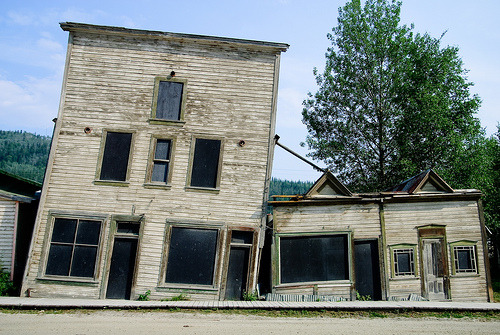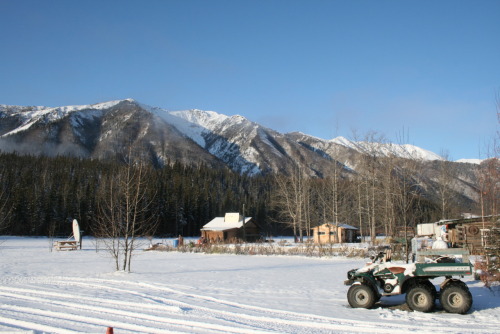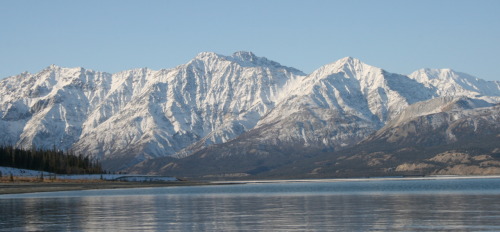Imagine an untouched wilderness landscape four times the size of England, dizzyingly high mountain ranges and glacial-fed rivers dappled in gold and underpinned by diamond and silver seams.
Consider 360◦ wilderness vistas, where 17,000 wild grizzly and black bears wander the woods surrounding a handful of picturesque frontier towns tucked away in green valleys.
This is not mythology. It is the Yukon.
The Yukon is a geographically unique and isolated territory in north western Canada, sandwiched between British Columbia and the Arctic Ocean. It has the tallest peaks and coldest temperatures in North America, and is subsumed in Arctic twilight for half the year, contrasted by long summer days and the midnight sun.
The Yukon’s uniqueness ends abruptly, however, when we consider the statistics regarding employment equity for disabled people (or to use the preferred Canadian vernacular, ‘people with disabilities’). In the Yukon, like elsewhere, disabled people remain underrepresented within employment statistics and continue to face significant barriers in the workplace.
With a population of 35,000, an unemployment rate of 5%, a historically strong growth economy and highly educated workforce enjoying an equally high standard of living, the Yukon stands out as a northern oasis, free of the economic ills facing the rest of the western world. It is a refreshingly friendly, familiar place where everyone knows everyone else; where people stop and talk in the streets and welcome newcomers with smiles. What better place to develop a comprehensive disability employment strategy that ensures a barrier-free, progressive work and business environment?
For the first time, business owners and managers across the whole of the Yukon have been asked for their perspective and input about why disabled people continue to face barriers in the workplace.
Now, at the start of 2012, the Yukon Council on Disability is proud to report significant progress is underway – real, measurable progress – grounded in the
recognition by businesses across the Yukon that, yes, barriers preventing people from having a full life, including employment, remains a serious problem, and one that
can and
must be resolved through progressive, coordinated business and community planning.
To be clear, though, Yukon business owners are not discussing workplace accommodations and revising human resources policies and procedures simply out of the goodness of their hearts. Yukon might be a place full of thoughtful, highly educated people, but business is business wherever you go.
Indeed, Yukon employers identified that they are interested in recruiting and retaining disabled people because it makes good business sense. An inclusive, happy, productive workforce = efficient, expanding, successful, sustainable business. And if there is one thing that all successful business leaders agree on, it’s that a business is only as successful as its people. What businesses depend on is access to a highly skilled, experienced and motivated labour market, and that includes disabled people.
It is not our intention to imply that business owners in the Yukon are only interested in the bottom line, with disabled people simply an untapped labour market and instrument to coldly increase productivity. Rather, without necessarily using the terminology, business owners are thinking imaginatively about business in terms of the triple bottom line – people, planet, profit – and the benefits of becoming the employer and provider of choice to an increasingly discerning marketplace.
In many ways, building a successful business is about connecting the dots that comprise the full image of what you are trying to achieve as a business and good corporate citizen. Success, check. Sustainability, yes. Committed labour force, essential. Support of the community, absolutely. A complete, well-rounded happy work environment, yes please. But connecting all these dots is not as simple as it might seem.
Unlike a children’s connect-the-dots activity book, entrepreneurs and business owners are starting with a blank page, having to identify all the dots (read, business planning factors), then mapping these out in a way that forms the shape of their idealised business (products, markets, size, growth, etc.) and finally connecting the dots together in a way that results in a business resembling the intended progressive, friendly corporate citizen. To use a hackneyed example, think Apple Inc and its corporate image: imaginative, barrier-free, shrewd, customer-focussed, creative products for a whole, inclusive community.
Smart business owners recognise they can simultaneously mitigate risk of failure and promote growth simply by taking progressive steps towards considering the needs and desires of their employees and the community in which they operate. But, articulating and persisting with a progressive, strategic business plan is not easy. Managers must resist the everyday temptation of short-term gains through cost-cutting in areas such as workplace innovations inspired by fresh, forward-thinking universal design. Recruiting or retaining a person with a disability and modifying the business to ensure universal accessibility is invariably an investment in the future.
Interestingly, one of the key outcomes of this present initiative is that businesses are coming to terms with the revelation that many of employees they depend on most of all are in fact disabled. This awareness, admission and recognition by business is indeed new. Many businesses might have been employing and accommodating disabilities for years, but by going through this process of questioning, discussing and reflecting, businesses are finally putting words and structures around what they have been doing intuitively. The translation from the intuitive to the explicit is the essential first step to the kind of strategic planning that will enable businesses to expand productivity through targeted workplace modernisations, inclusive of accommodations to the advantage of all employees.
It’s now January, 2012, and the Yukon Council on Disability is looking ahead to completing the consultation phase of the Yukon Disability Employment Strategy development with business (see the blogs,
here and
here) and undertaking the difficult task of developing the strategy itself: the set of guidelines, best practices and resources which will help businesses create successful, inclusive, barrier-free workplaces. With disability as a core component of a whole community, businesses in the Yukon are eager to finally connect
all the dots and demonstrate to the world that equity in employment for disabled people is not only possible, but good business.











